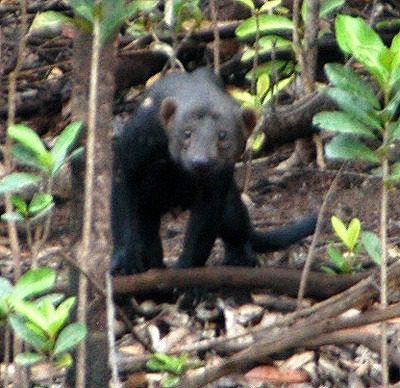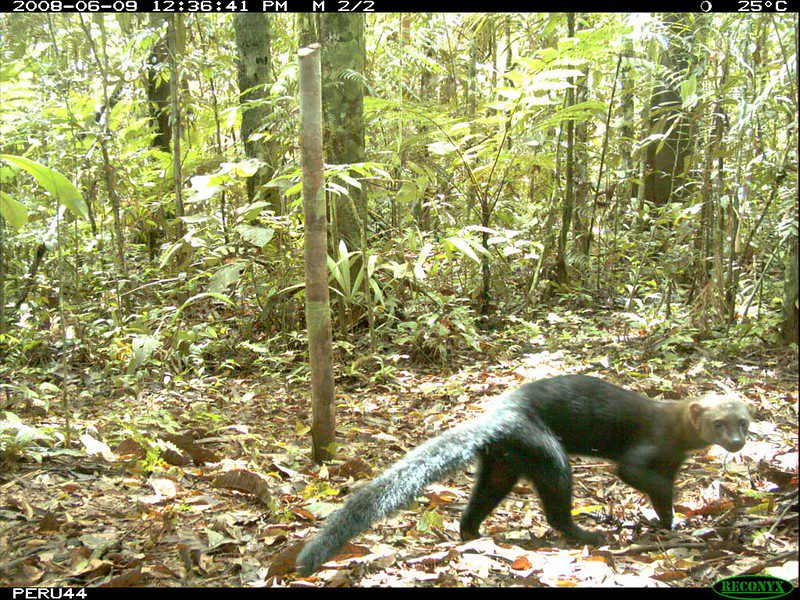The tayra (Eira barbara) is a fascinating, elusive mammal that roams the forests and tropical lowlands of Central and South America. Often overshadowed by more prominent carnivores, the tayra is a unique creature with a mix of characteristics that surprise even seasoned wildlife enthusiasts. In this comprehensive guide, we’ll explore every major aspect of this intriguing species, categorized by keyword themes for clarity and depth.
What Type of Animal is a Tayra?
Tayra Classification and Overview
- Kingdom: Animalia
- Phylum: Chordata
- Class: Mammalia
- Order: Carnivora
- Family: Mustelidae
- Genus: Eira
- Species: Eira barbara
The tayra is a member of the mustelid family, which includes weasels, otters, ferrets, and martens. As a carnivorous mammal, it exhibits behaviors and traits typical of agile, stealthy predators. However, its omnivorous diet and arboreal lifestyle add to its versatility.

Tayra Animal Pronunciation
The word “tayra” is commonly pronounced as /ˈtaɪ.rə/ (TY-rah).
Tayra Animal in Spanish
In Spanish, the tayra is known as “cabeza de viejo”, which translates to “old man’s head,” a nickname derived from its greyish facial fur in some individuals.
Tayra Animal Size
General Size and Physical Traits
- Length (head to body): 60–70 cm (24–28 inches)
- Tail length: 35–46 cm (14–18 inches)
- Weight: 2.7–7 kg (6–15 lbs)
Tayras have a long, slender body with short legs and a bushy tail. They have a sleek, dark brown to black coat, often with a lighter patch on the throat. Their sharp claws and muscular limbs aid in both climbing and ground movement.
Tayra Habitat and Range
Natural Environment
Tayras thrive in a wide variety of habitats, which include:
- Tropical rainforests
- Evergreen forests
- Secondary growth woodlands
- Savannas
- Plantations and farmlands (in some cases)
They prefer dense vegetation but are highly adaptable, sometimes venturing into human-altered environments.
Tayra Animal Range
Their geographical range extends from southern Mexico through Central America and into South America, as far south as northern Argentina. Countries in their range include:
- Mexico
- Guatemala
- Costa Rica
- Brazil
- Colombia
- Ecuador
- Peru
- Bolivia
- Paraguay
- Argentina
Tayras are primarily diurnal and are often found in tree canopies or foraging on the forest floor.
Tayra Diet and Feeding Behavior
Tayra Animal Diet
Tayras are opportunistic omnivores with a diverse diet. Their meals may consist of:
- Fruits and berries (especially bananas, figs, and papayas)
- Small mammals (rodents and squirrels)
- Birds and eggs
- Reptiles and amphibians
- Insects and larvae
They are known to store unripe fruits and return to consume them when ripened—a rare behavior among carnivores.
Feeding Techniques
Tayras use their keen sense of smell and sharp claws to hunt and forage. Their agility allows them to raid bird nests and navigate through complex tree canopies with ease.
Tayra Adaptations
Physical Adaptations
- Prehensile tail: Used for balance while climbing.
- Sharp claws: Assist in climbing and gripping prey.
- Keen eyesight and sense of smell: Essential for locating food.
- Muscular limbs: Provide strength and speed.
Behavioral Adaptations
- Diurnal activity: Active during the day, avoiding many nocturnal predators.
- Vocal communication: They emit barks, growls, and even cat-like meows to communicate.
- Tool-like behavior: Storing fruit demonstrates a level of foresight.
Tayra Predators
Natural Enemies
Despite their agility, tayras do face threats from predators including:
- Large birds of prey (e.g., eagles and hawks)
- Jaguars and ocelots
- Humans (primarily through deforestation and hunting)
Tayras rely on their speed, tree-climbing skills, and alertness to evade danger.
What Animals Eat Tayra?
The primary predators that feed on tayras are large carnivorous cats and some raptors. Young tayras are particularly vulnerable, often falling prey to snakes or carnivorous birds.
Fun Facts About the Tayra
- Intelligent Foragers: Tayras are among the few mammals that demonstrate planning behavior by collecting and storing fruit.
- Versatile Climbers: They can leap between tree branches and run up trunks almost vertically.
- Unusual Sounds: They can produce a range of sounds, from chirps to screams, depending on their emotional state.
- Independent Offspring: Tayra kits are born blind but grow rapidly, becoming independent within a few months.
- Solitary Creatures: Except during mating season or when females rear their young, tayras prefer to roam alone.

Tayra Behavior and Life Cycle
Social Behavior
Tayras are solitary animals, usually only coming together to mate. They mark territories with scent glands and have overlapping ranges.
Breeding and Offspring
- Mating season: Varies by region, often between March and July
- Gestation period: Approximately 63–70 days
- Litter size: Usually 1 to 3 kits
- Parental care: Provided solely by the mother
Kits remain with their mother for several months before venturing off independently.

Conservation and Current Status
Conservation Status
As of now, tayras are listed as Least Concern by conservation bodies due to their wide distribution. However, localized threats do exist.
Threats to Survival
- Habitat destruction (deforestation for agriculture and urbanization)
- Illegal hunting (sometimes for bushmeat or the pet trade)
- Climate change (altering food availability and habitat suitability)
Conservation Efforts
There are region-specific initiatives focused on preserving forest ecosystems, which indirectly benefit the tayra and other wildlife sharing the same habitat.
Tayra and Human Interaction
Encounters with Humans
Though elusive, tayras have occasionally been spotted near human settlements, especially where fruit is abundant. Farmers sometimes consider them pests due to their raids on poultry or crops.
Tayra in Captivity
Tayras are rarely kept in zoos or research facilities due to their need for large, enriched environments and their solitary nature.
Why the Tayra is Unusual
Unique Traits
- Fruit-stashing behavior uncommon among mustelids.
- Daytime activity sets them apart from many other carnivores.
- Combination of arboreal and terrestrial habits offers high adaptability.
Evolutionary Standout
As the only species in the genus Eira, tayras are a monotypic anomaly within the mustelid family, making them an evolutionary outlier worth studying.
Conclusion
The tayra is a marvel of adaptability, intelligence, and resilience. From its complex diet and versatile habitat use to its surprising behaviors like fruit storage and diurnal hunting, this creature challenges our assumptions about mustelids. Whether you’re a wildlife enthusiast or simply curious about lesser-known animals, the tayra offers a rich subject for exploration.
As we learn more about species like the tayra, we gain a deeper appreciation for the biodiversity that exists in our world and the importance of preserving the delicate ecosystems that support them.


